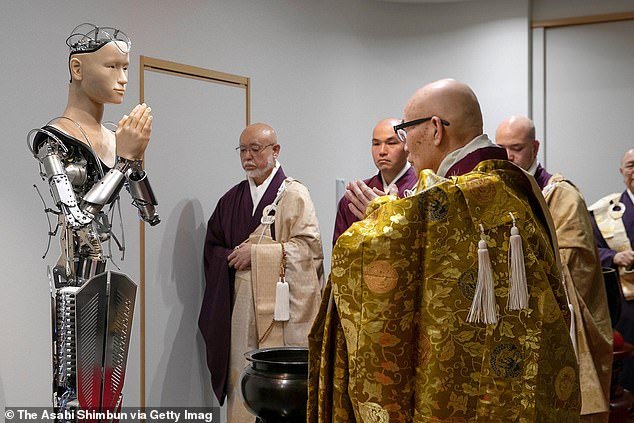
13 March 2025, Kyoto, Japan:
Kodaiji Temple in Kyoto has introduced Mindar, an AI-powered robotic monk, to deliver Buddhist teachings in a modern, engaging way. This unique blend of spirituality and artificial intelligence is drawing global attention, sparking debates on the future of religious practices.
A Monk Like No Other
Standing six feet tall, Mindar has a human-like face, mechanical arms, and a sleek metallic body. Designed to resemble Kannon, the Buddhist deity of mercy, the robot delivers sermons with synchronized hand gestures and expressive facial movements. Unlike traditional monks, Mindar never tires, forgets, or deviates from doctrine, ensuring consistency in teachings.
Developed by Hiroshi Ishiguro Laboratory at Osaka University in collaboration with Kodaiji Temple, Mindar is equipped with AI-driven speech synthesis, allowing it to recite Buddhist scriptures and offer philosophical reflections on life and death. Visitors can watch as the robot preaches the Heart Sutra, a central text in Mahayana Buddhism, while incorporating modern interpretations of compassion and impermanence.
Bridging the Generation Gap
The introduction of Mindar is Kodaiji’s attempt to make Buddhism more accessible to younger generations, who are increasingly disconnected from traditional religious practices. “We want people to see Buddhism in a new light,” said Tensho Goto, the temple’s chief steward. “AI will not replace monks, but it can help spread wisdom in ways that appeal to the modern world.”
While some visitors find Mindar fascinating and thought-provoking, others feel uncomfortable with a machine delivering spiritual messages. “It’s amazing to see technology used this way, but I still believe a human monk’s presence is irreplaceable,” said a Japanese tourist.
A Global Debate on AI and Religion
Kodaiji’s experiment raises deeper questions about AI’s role in spirituality. Can an artificial entity truly understand human suffering? Can faith be strengthened through machine-led guidance? Similar initiatives have been explored worldwide, such as AI-generated prayers and digital religious assistants.
Despite mixed reactions, Kodaiji Temple remains committed to this technological experiment, believing it can complement traditional teachings rather than replace them. As AI continues to evolve, the intersection of technology and faith may redefine how religious practices adapt in the digital age.
Keep Reading Questiqa.com and get more News Headlines On Our Social Platforms And Do Follow.




